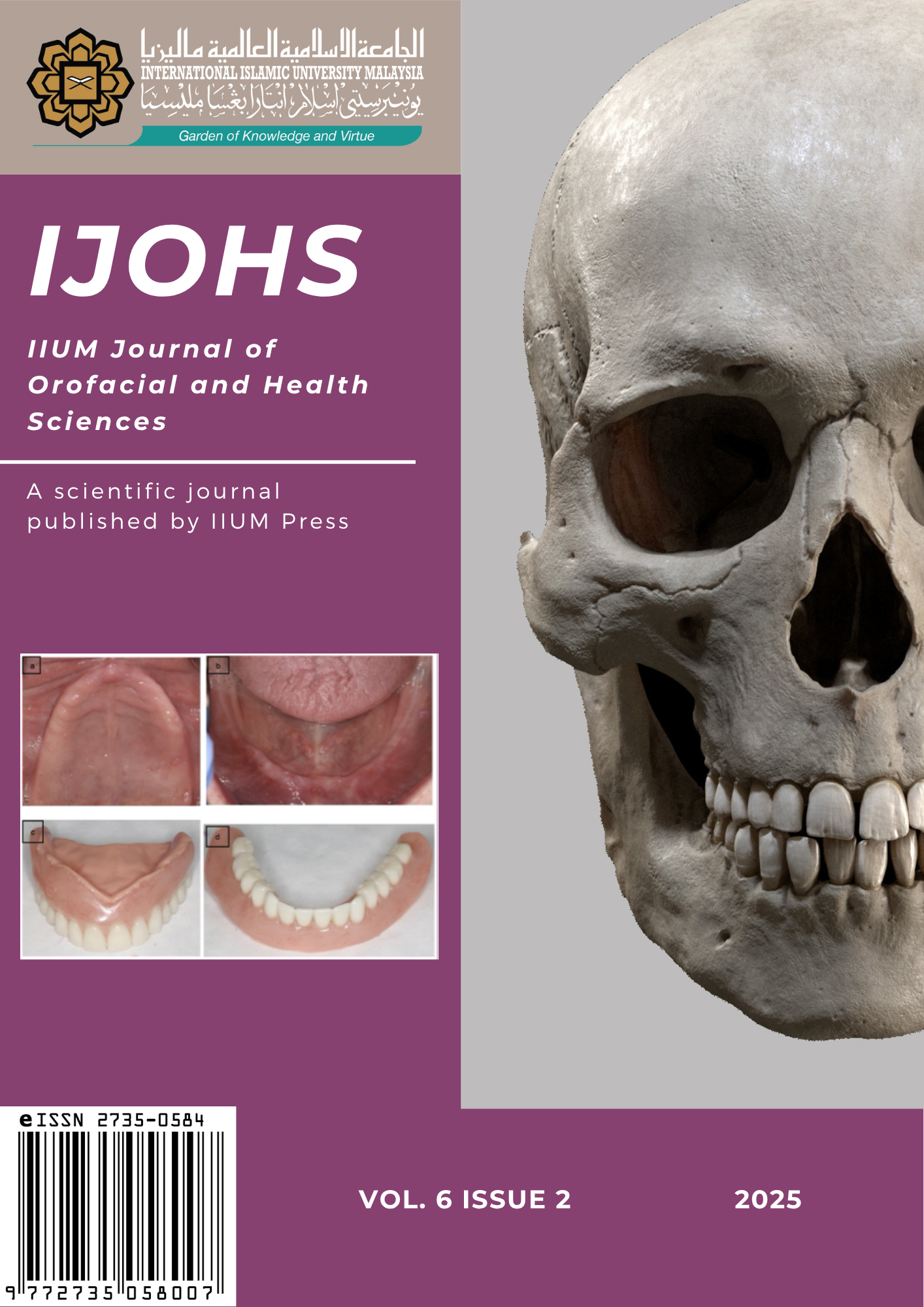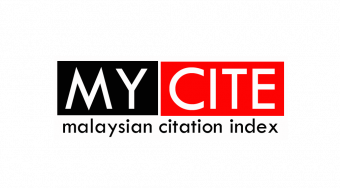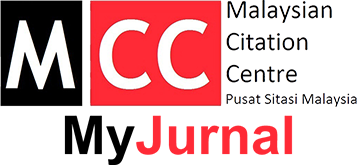Antimicrobial properties of local Kelulut honey against selected oral pathogens
DOI:
https://doi.org/10.31436/ijohs.v6i2.400Keywords:
antimicrobial, antifungal, Kelulut honey, oral pathogensAbstract
There are limited reports on the antimicrobial properties of Kelulut honey against oral pathogens. Hence, this study aimed to determine the antimicrobial properties of local Kelulut honeys obtained from the Malaysian Agriculture Research and Development Institute (MARDI) and Tangkak, Johor, Malaysia. The samples were mixed with sterile deionised water to obtain series of honey concentrations and evaluated against Streptococcus mutans, Staphylococcus aureus, Candida albicans and Candida tropicalis using agar well diffusion method. Bacteria S. mutans and S. aureus were grown anaerobically on Mueller-Hinton agar and incubated at 37°C for 24 hours, while fungi, C. albicans and C. tropicalis were grown on Sabouraud Dextrose agar at 25°C for 48 hours. Cultures were prepared in triplicates and adjusted to 0.5 McFarland standard (1 x 108 CFU/ml). Wells (6 mm diameter) were made on the agar, and 60 µl of honey at concentrations of 2.5, 2.0, 1.5, 1.0 and 0.75 g/ml were added onto each well. Sterile deionised water was used as negative control, and 0.2% chlorhexidine as positive control. Upon incubation, the zones of inhibition were measured using a digital calliper. Both Kelulut honeys exhibited zones of inhibition against S. mutans at 2.5, 2.0 and 1.5 g/ml whereas for S. aureus, the inhibition was noticed only at 2.5 and 2.0 g/ml. No inhibition zones were observed against C. albicans and C. tropicalis at any concentration. This study showed that both Kelulut honeys exhibited antibacterial properties against S. mutans and S. aureus but did not exhibit antifungal activity against C. albicans and C. tropicalis.
References
Adewumi, A., Ogunjinmi, A. (2011). The healing potential of honey and propolis lotion on septic wounds. Asian Pacific Journal of Tropical Biomedicine,1(1), S55–S57.
Ahmadi-Motamayel, F., Sare Hendi, S., Alikhani, M., Khamverdi, Z., Khamverdi, Z. (2013). Antibacterial activity of honey on cariogenic bacteria. Journal of Dentistry (Tehran), 10(1),10-15.
Almasaudi, S. (2021). The antibacterial activities of honey. Saudi Journal of Biological Sciences, 28(4), 2188-2196.
Andualem, B. (2014). Physico-chemical, microbiological and antibacterial properties of Apis mellipodae and Trigona spp. honey against bacterial pathogens. World Journal of Agricultural Sciences,10(3), 112-120.
Badawy, O.F.H., Shafii, S.S.A., Tharwat, E.E., Kamal, AM. (2004). Antibacterial activity of bee honey and its therapeutic usefulness against Escherichia coli 0157:H7 and Salmonella typhimurium infection. Revue scientifique et technique (International Office of Epizootics), 23(3),1011-1022.
Bang, L.M., Buntting, C., Molan, P. (2003). The effect of dilution on the rate of hydrogen peroxide production in honey and its implications for wound healing. Journal of Alternative and Complementary Medicine, 9(2), 267-273.
Bellissimo-Rodrigues, W.T., Menegueti, M.G., de Macedo, L.D., Basile-Filho, A., Martinez, R., Bellissimo-Rodrigues, F. (2019). Oral mucositis as a pathway for fatal outcome among critically ill patients exposed to chlorhexidine: Post hoc analysis of a randomized clinical trial. Critical Care, 23,382.
Bloch, S., Hager-Mair, F. F., Andrukhov, O., Schäffer, C. (2024). Oral streptococci: modulators of health and disease. Frontiers in Cellular and Infection Microbiology, 14:1357631.
Boorn, K.L., Khor, Y.Y., Sweetman, E., Tan, F., Heard, T.A, Hammer, K.A. (2010). Antimicrobial activity of honey from the stingless bee Trigona carbonaria determined by agar diffusion, agar dilution, broth microdilution and time-kill methodology. Journal of Applied Microbiology, 108(5),1534-1543.
Brookes, Z., Teoh, L., Cieplik, F., Kumar, P. (2023). Mouthwash effects on the oral microbiome: Are they good, bad, or balanced?. International Dental Journal, 73 (Suppl 2): S74-S81.
Brudzynski, K. (2020). A current perspective on hydrogen peroxide production in honey. A review. Food Chemistry, 332 (2020), 127229.
Brudzynski, K., Abubaker, K., Laurent, M., Castle, A. (2011). Re-examining the role of hydrogen peroxide in bacteriostatic and bactericidal activities of honey. Frontiers in Microbiology, 25(2), 213.
Combarros-Fuertes, P., Fresno, J.M., Estevinho, M.M., Sousa-Pimenta, M., Tornadijo, M.E., Estevinho, L.M. (2020). Honey: Another alternative in the fight against antibiotic-resistant bacteria? Antibiotics, 9(11), 774.
Deglovic, J., Majtanova, N., Majtan, J. (2022). Antibacterial and antibiofilm effect of honey in the prevention of dental caries: A recent perspective. Foods, 11, 2670.
Eswaran, V., Krishnadoss, V., Priya, V., Bhargava, H.R. (2015). A comparative study of the biochemical, antioxidative and antimicrobial activity of Apis and Trigona honey collected from different geographical areas of India. World Applied Sciences Journal, 33(1), 160-167.
Ewnetu, Y., Lemma, W., Birhane, N. (2013). Antibacterial effects of Apis mellifera and stingless bees honeys on susceptible and resistant strains of Escherichia coli, Staphylococcus aureus and Klebsiella pneumoniae in Gondar, Northwest Ethiopia. BMC Complementary and Alternative Medicine, 13(1), 269.
Fitzsimonds, Z.R., Rodriguez-Hernandez, C.J., Bagaitkar, J., Lamont, R.J. (2020). From beyond the pale to the pale riders: the emerging association of bacteria with oral cancer. Journal of Dental Research, 99: 604–612.
Fletcher, M.T., Hungerford, N.L., Webber, D., De Jesus, M.C., Zhang, J., Stone, I.S.J., et al. (2020). Stingless bee honey, a novel source of trehalulose: a biologically active disaccharide with health benefits. Scientific Reports, 10(1), 12128.
Girma, A., Seo, W., She, R.C. (2019}. Antibacterial activity of varying UMF-graded Manuka honeys. PLOS ONE, 14(10), e0224495.
Godocikova, J., Hrnciarova, M., Deglovic, J., Bucekova, M., Majtan, J. (2025). Differences in the antibacterial efficacy of honey against oral and nonoral bacterial pathogens in artificial human saliva. European Food Research and Technology, 2025.
Guo L, He X, Shi W. (2014). Intercellular communications in multispecies oral microbial communities. Frontiers in Microbiology, 5:328.
Haron, H., Talib, R., Subramaniam, P., Natasha, Z., Arifen, Z., Ibrahim, M. (2022). A comparison of chemical compositions in kelulut honey from different regions (perbandingan komposisi kimia dalam madu kelulut dari kawasan berbeza). Malaysian Journal of Analytical Sciences, 26(3), 447–456.
Hohmann, S. (2002). Osmotic stress signaling and osmoadaptation in yeasts. Microbiology and Molecular Biology Reviews, 66(2), 300–372.
Irish, J., Carter, D.A., Blair, S.E., Heard, T.A. (2008). Antibacterial activity of honey from the Australian stingless bee Trigona carbonaria. International Journal of Antimicrobial Agents, 32(1), 89–90.
Jia, L., Kosgey, J. C., Wang, J., Yang, J., Nyamao, R. M., Zhao, Y., et al. (2020). Antimicrobial and mechanism of antagonistic activity of Bacillus sp. A2 against pathogenic fungus and bacteria: The implication on honey's regulatory mechanism on host's microbiota. Food Science & Nutrition, 8(9), 4857-4867.
Kateel, R., Bhat, G., Baliga, S., Augustine, A.J., Ullal, S., Adhikari, P. (2018). Antibacterial action of tropical honey on various bacteria obtained from diabetic foot ulcer. Complementary Therapies in Clinical Practice, 30, 29-32.
Kaya, B., Y?ld?r?m, A. (2021). Determination of the antioxidant, antimicrobial and anticancer properties of the honey phenolic extract of five different regions of Bingöl province. Journal of Food Science and Technology, 58(6), 2420-2430.
Kimoto-Nira, H., Amano, K. (2008). Antimicrobial activity of honey produced by stingless honey bees. Journal of Apicultural Research, 47(4), 325-327.
Kuropatnicki, A.K., K?ósek, M., Kucharzewski, M. (2018). Honey as medicine: historical perspectives. Journal of Apicultural Research, 57(1), 113–118.
Kwakman, P.H.S., te Velde, A.A., de Boer, L., Vandenbroucke-Grauls, C.M.J.E., Zaat, S.A.J. (2011). Two major medicinal honeys have different mechanisms of bactericidal activity. PLOS ONE, 6(3), e17709.
Kwakman, P.H.S., Zaat, S.A.J. (2012). Antibacterial components of honey. IUBMB Life, 64(1), 48-55.
Liu, J.R., Ye, Y.L., Lin, T.Y., Wang, Y.W., Peng, C.C. (2013). Effect of floral sources on the antioxidant, antimicrobial, and anti-inflammatory activities of honeys in Taiwan. Food Chemistry,139(1-4), 938-943.
Mandal, M.D., Mandal, S. (2011). Honey: Its medicinal property and antibacterial activity. Asian Pacific Journal of Tropical Biomedicine, 1(2), 154-160.
Mandal, A., Singh, D.K., Siddiqui, H., Das, D., Dey, A.K. (2017). New dimensions in mechanical plaque control: An overview. Indian Journal of Dental Sciences, 9:133-139.
Mato, I., Huidobro, J.F., Simal-Lozano, J., Sancho, M.T. (2003). Significance of nonaromatic organic acids in honey. Journal of Food Protection, 66(12):2371-2376.
Mohd Izwan, Z. (2016). Study on antioxidant capacity, antibacterial activity, phenolic profile and microbial screening of selected Malaysian and Turkish honey: Thesis. University of Malaya, Kuala Lumpur.
Mohd-Aspar, M.A.S., Edros, R., Mokhtar, S.U., Kamarudin, N. (2023). The roles of acidity, peroxide and non-peroxide compounds in antibacterial properties of Malaysian Kelulut, Tualang and Acacia honey. Malaysian Journal of Microbiology, 19(3), 291-300.
Molan, P.C., Cooper, R.A. (2000). Honey and sugar as a dressing for wounds and ulcers. Tropical Doctor, 30(4), 249-250.
Molan, P.C. (1992). The antibacterial activity of honey. Bee World, 73(1), 5-28.
Nader, R.A., Mackieh, R., Wehbe, R., El Obeid, D., Sabatier, J.M., Fajloun, Z. (2021). Beehive products as antibacterial agents: A review. Antibiotics, 10(6), 717.
Ogwu, M.C., Izah, S.C. (2025). Honey as a natural antimicrobial. Antibiotics, 14(3), 255.
Omar, S., Mat-Kamir, N.F., Sanny, M. (2019). Antibacterial activity of Malaysian produced stingless-bee honey on wound pathogens. Journal of Sustainability Science and Management, 14(3), 67-69.
Ranneh, Y., Ali, F., Zarei, M., Akim, A.M., Hamid, H.A., Khazaai, H. (2018). Malaysian stingless bee and Tualang honeys: A comparative characterization of total antioxidant capacity and phenolic profile using liquid chromatography-mass spectrometry. LWT, 89, 1–9.
Rashidi, M.K., Mirazi, N., Hosseini, A. (2016). Effect of topical mixture of honey, royal jelly and olive oil-propolis extract on skin wound healing in diabetic rats. Wound Medicine, 12, 6–9.
Roberts, A.E.L, Brown, H.L, Jenkins, R.E. (2015). On the antibacterial effects of manuka honey: Mechanistic insights. Research and Reports in Biology, 6, 215-224.
Wen, L., Mu, W., Lu, H., Wang, X., Fang, J., Jia, Y., Li, Q., Wang, D., Wen, S., Guo, J., Dai, W., Ren, X., Cui, J., Zeng, G., Gao, J., Wang, Z., Cheng, B. (2022). Porphyromonas gingivalis Promotes Oral Squamous Cell Carcinoma Progression in an Immune Microenvironment. Journal of Dental Research, 99(6): 666-675.
Yusoff, N.Y.N, Mohamad, S., Abdullah, H., Rahman, N.A. (2016). Antifungal activity of Malaysian honey and propolis extracts against pathogens implicated in denture stomatitis. AIP Conference Proceedings, 1791(1), 020006.
Zainol, M.I., Mohd Yusoff, K., Mohd Yusof, M.Y. (2013). Antibacterial activity of selected Malaysian honey. BMC Complementary and Alternative Medicine, 13(1), 129.
Zhang, Z., Liu, S., Zhang, S., Li, Y., Shi, X., Liu, D., Pan, Y. (2022). Porphyromonas gingivalis outer membrane vesicles inhibit the invasion of Fusobacterium nucleatum into oral epithelial cells by downregulating FadA and FomA. Journal of Periodontology, 93(4), 515-525.
Zubaidah, H., Irfan, M., Azian, H., Rosdan, S., Siti Amrah, S. (2018). Antifungal effect of three local Malaysian honeys on selected pathogenic fungi of otomycosis: An in vitro evaluation. Journal of Young Pharmacists,10(4), 508-512.
Zulkhairi Amin, F.A., Sabri, S., Mohammad, S.M., Ismail, M., Chan, K.W., Ismail, N. et al. (2018). Therapeutic properties of stingless bee honey in comparison with European bee honey. Advances in Pharmacological Sciences, 2018, 6179596.












